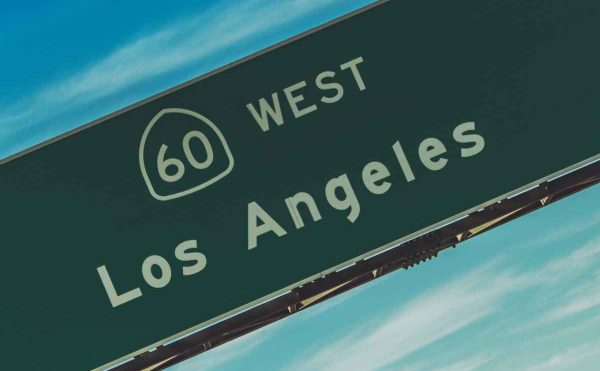No matter if you own, lease, or finance a car, getting an auto insurance policy to protect you and your vehicle is a great investment. Yes, it will add to the cost of owning or driving a car, but it will also add an extra layer of financial security when you and your car are caught in an accident. New car owners might need an explanation of auto insurance coverage, so here it is!
Auto Insurance in a Nutshell

Automobile insurance, sometimes also called car insurance or vehicle insurance, is a type of insurance coverage that provides financial securities to motor vehicle owners—or in this case, car owners—when accidents happen. Auto insurance policyholders will be protected against losses or damage that may occur to the vehicle, persons, or property caused by an accident or natural disaster.
Why do we need this financial protection, you may ask. Well, let’s say you are involved in a crash when driving home after buying groceries. You managed to get out mostly unscathed, except for a few cuts and a dislocated shoulder. However, your car got its windshield shattered, its hood ripped off, and its headlights smashed. Imagine the amount of money you’d have to spend to cover all the damage and injuries you sustained.
If you do not own an auto insurance policy, you could easily go penniless just from this accident alone. If you do own an auto insurance policy, your insurance company will pay most, if not all, the costs for mending the damage and injuries according to the policy.
The Six Types of Auto Insurance Coverage

Even though almost all the states in the US mandate drivers to obtain auto insurance, most mandatory insurance coverage only provides protection against liability. This ensures that all drivers will have access to protection at a more affordable price. Of course, you can opt to add more coverage to your policy if you are willing to pay extra.
In general, auto insurance policies are grouped into two general categories: liability-only policy and full-coverage insurance. A liability-only policy only offers coverage for bodily injury liability and property damage liability. Full-coverage insurance offers coverage for both liabilities as well as collision and comprehensive insurance.
Usually, a state-mandated Standard Policy for auto insurance will include PIP, Bodily Injury Liability, and Property Damage Liability. However, other coverage will still be available as an option from the insurance company. Below is the explanation of auto insurance coverage commonly offered by insurance companies:
1. Bodily Injury Liability
If you caused an accident that inflicted bodily harm to other people, you are responsible for paying for their treatment. This coverage will pay for the treatment, rehabilitation, funeral expenses, legal fees, and other costs related to treating bodily injuries.
2. Property Damage Liability
When an accident happens, sometimes it causes damage to nearby properties. If you have Property Damage Liability in your policy, the insurance will help you to pay for repairing or replacing the damaged property. However, this coverage seldom covers damage to your own car. You will need different coverage to pay for that damage.
3. Personal Injury Protection (PIP)
While Bodily Injury Liability coverage protects the persons you injured in an accident, Personal Injury Protection (PIP) protects you or other persons covered under your policy.
4. Collision
Accidents usually damage the vehicle, especially when it collides with objects like other vehicles, road signage, etc. Regardless of who is at fault, collision insurance covers the damage your vehicle sustained in an accident. It’s rarely offered on its own and is usually tied with comprehensive insurance.
5. Comprehensive
Non-collision incidents do happen, and it’s more common than you might think. This coverage offers protection from damage caused by an act of vandalism, weather, theft, animals, falling objects, and natural disasters.
6. Uninsured/Underinsured Motorist Coverage
This insurance will cover bodily injury or property damage sustained in an accident caused by an uninsured driver. It will also cover you if the person causing the accident is insured but has less coverage than you.
Calculating Which Coverage You Need

After a somewhat brief explanation of auto insurance coverage, it is time for you to calculate which coverage you need for your car. In most situations, obtaining the minimum coverage mandated by the state government is enough to protect you from minor damage or injuries. It covers less privilege, but it is the most affordable policy you can get.
The average annual cost of these minimum coverage policies varies by state. It ranges from $223 in the state of Iowa all the way up to $1,371 in New York. As a comparison, the annual cost for a full coverage policy in Iowa and New York is $1,315 and $3,139, respectively. These numbers show that while car insurance is mandated in almost all states, the annual cost for a full-coverage policy is not really affordable for everyone.
Deciding on which auto insurance coverage you will need to acquire comes down to two things: your financial situation and the car itself. Ideally, everyone wants to be fully protected by their insurance. Realistically, not everyone can afford a full coverage policy. This is why some state governments also mandated that an affordable policy be available for all insurance companies operating in that state.
Now, if you can afford the full coverage, the other thing you have to consider is the car itself. For leased or financed cars, a full-coverage policy is the best option, not to mention that some rentals or dealerships may require you to buy the full-coverage policy.
If it’s an older or secondhand car with high mileage, the value of the car itself has diminished to the point that collision and comprehensive coverage are not worth it anymore. However, you might still want full coverage for old cars that are considered “antique”. These cars are often treated as historical pieces, and their value will actually increase the older they get—but only if it’s in good condition.
The key takeaway based on the explanation of auto insurance coverage we discussed is that better coverage is not always a better option. Sure, a full-coverage policy is the ideal choice. However, in most cases, a minimum coverage policy mandated by the state will do just fine.
Bagikan










